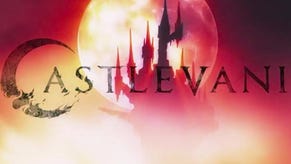Castlevania: Circle of the Moon
Review - classic platform action reinvented for the Game Boy Advance, or a shallow remake?
Kings of Convenience
Konami's early GBA line-up is impressive, to put it lightly. "Krazy Racers" is being treated like Goemon Kart, "Silent Hill" is probably going to revolutionize the idea of adventure/horror on handhelds (and to promote it K are shipping a bunch of journos out to an abandoned castle in Southern France and scaring the pants off them for a weekend), and last but definitely not least, "Castlevania: Circle of the Moon" is arguably the best 2D game in the long-running series, and sits among the top five Game Boy Advance launch titles. You see, Konami know a thing or two about gameplay, and it shows. The Castlevania series is one of the most challenging and constantly spellbinding we've ever come across, and Circle of the Moon is no exception. It doesn't stray from the basic Castlevania formula, so you spend most of the time using your whip creatively to outfox zombies, bats and other demonic forces, while collecting hearts to stay alive and power your secondary weapon; Holy water, a boomerang, a dagger or a stopwatch. In terms of storyline (as if it required one), Circle of the Moon gives you control of Nathan Graves, whose kidnapped father is currently at the mercy of the oft-resurrected Dracula. The structure of the game disregards the SNES-based Castlevania's principles of "levels", favouring a PSX-like continuous castle, with your progress charted by the futuristic auto-map. Quite why Graves decided to create a map on the fly despite obvious intel from the Belmonts of yore will remain a mystery. Also, like the esteemed Belmonts before him, Graves starts out with next to nothing; a simple whip and a lot of enemies to overcome. In the first hours of his quest, he learns gradually more advanced techniques like running, double-jumps and even an Indiana Jones-like whip swing.
Dark
Rather like the auto-map, Circle of the Moon's experience points and dual-select systems (DSS) are very RPGish. Experience points are collected by defeating enemies, and once a certain number have been accrued, Graves goes a level up. On the other hand, collecting DSS cards from defeated enemies and secret areas gives you a more varied arsenal to play with in certain tricky situations. DSS cards come in two categories; Action and Attribute, and when one card from each category is combined, you can use specialist attacks, which are often particularly useful against bigger, nastier enemies. The graphics are one area of Circle of the Moon which might have done with a little work. They are very SNES-like, despite the GBA's extensive capacity to go beyond that, and although pretty, they are unlikely to catch anybody's attention. Retained are the multiscrolling backgrounds from the Super NES era (which help manifest the illusion of depth), but these are absent in a number of areas, which is frankly a bit peculiar. One of the other quibbles I have on the graphical side of things is the character animation, or distinct lack thereof. Graves looks no different to Belmont, granted, but that's no excuse for the lack of frames in his movement! It's like watching someone moonwalk forwards very awkwardly whenever he decides to shuffle along. To complete the graphical complaints section, there's the "contrast issue". I say issue, but to Konami it's a bleedin' feature. Already labouring under a barrage of complaints about the lack of backlighting and difficult to see LCD graphics, the Game Boy Advance now welcomes a game where the developers have purposefully toned down the contrast in order to create a mood. Frankly guys, you needn't have bothered, but I guess you weren't to know. It's not that much of an issue if you play in reasonable light anyway (and you shouldn't be playing Circle of the Moon without giving it your full attention, really, which means decent lighting), so we won't deduct merit points here.
Conclusions
Back on the other foot again though, and you simply cannot question the gameplay. It's a surprisingly difficult game at times, but it's never frustrating or tedious; you always want to keep playing until you're through, which is one of the biggest assets any game can ever boast. To put it into perspective, in one of my other favourite GBA launch titles, Super Mario Advance, you get to play with a number of characters and in a variety of worlds, but ultimately you're doing nothing but bop people with plants and shrubs from end to end. The gameplay doesn't get much more advanced. In Castlevania though, every new turn is a potential upgrade to your armoury, and there are techniques to learn gradually from start to stop. In terms of replay value, we don't know yet, unlike every other launch title we still haven't finished Circle of the Moon. It's big, it's sprawling, and it gives you something new to play with every few minutes. That's textbook gaming, that. Castlevania: Circle of the Moon feels more like Super Metroid Advance than Castlevania Advance. The idea of "levels" is gone, replaced by a single, overpowering castle of epicurean proportions, and the execution (apart from some occasionally questionable graphics) is spot on. A fantastic game from the "just one more go" school of development. Kudos to Konami.
-




